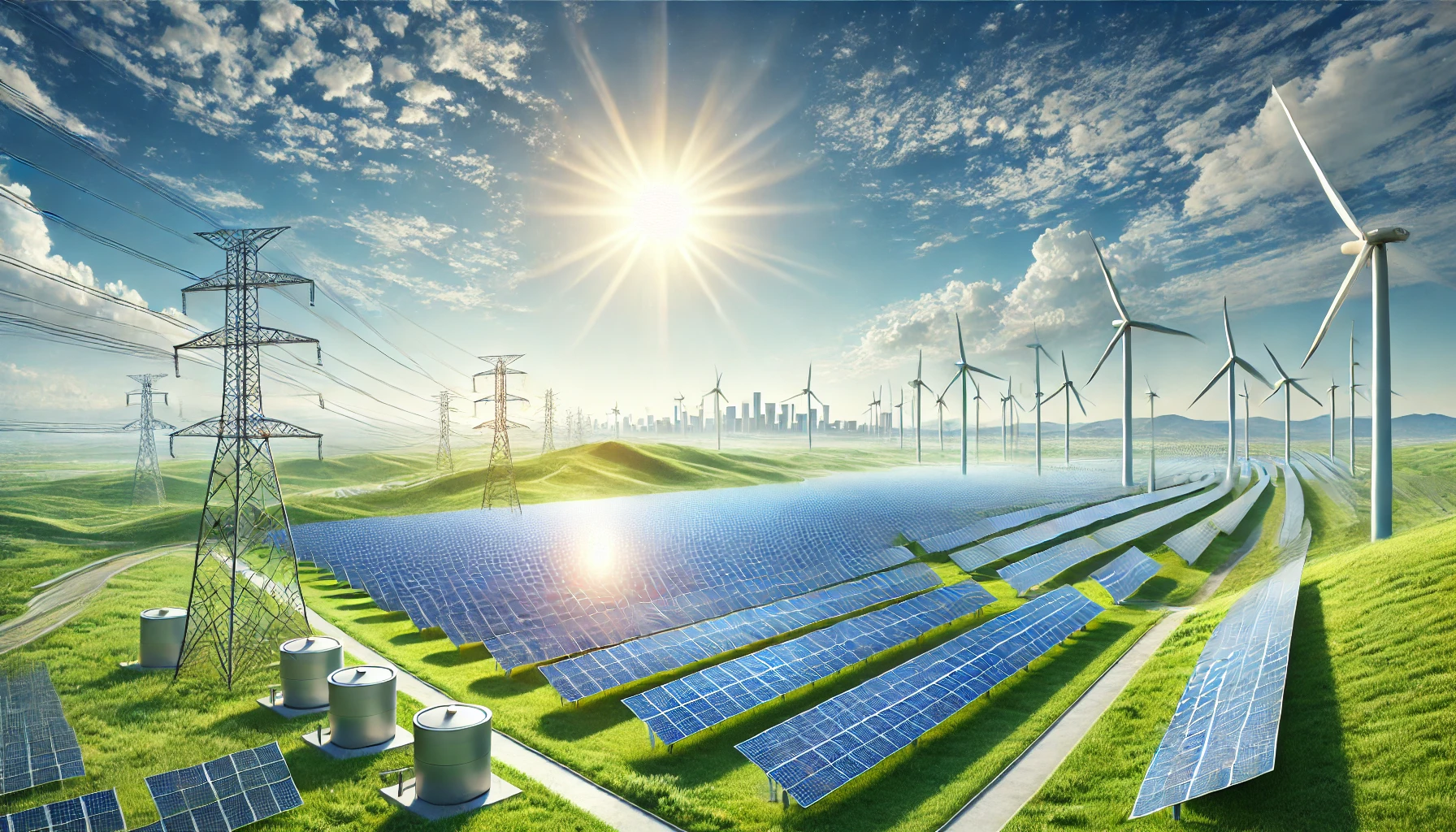Building a Low-Carbon Grid: The Economic Case for Renewables and Flexibility
The IMF paper explores the economic strategies for decarbonizing electricity, highlighting the shift towards solar and wind energy as the most cost-effective options. It emphasizes the need for investment in energy storage, grid infrastructure, and supporting technologies like nuclear and bioenergy to ensure a reliable, low-carbon electricity system.

A study from the IMF Research Department authorized for distribution by Florence Jaumotte, provides an in-depth analysis of the transition towards a low-carbon electricity system. The paper focuses on decarbonizing the electricity sector, which is the largest source of global emissions, and explores the different technological and economic pathways to achieve this. Integrated Assessment Models (IAMs), developed by institutions like the Joint Global Change Research Institute in the United States and the Potsdam Institute for Climate Impact Research, play a central role in determining optimal strategies for this transition. These models have recently shifted from favoring older technologies such as carbon capture and storage (CCS) and nuclear power to emphasizing renewable sources like solar and wind energy as the primary options for decarbonization.
Solar and Wind Take the Lead in the Energy Transition
Historically, models projected a significant role for CCS, bioenergy, and nuclear power, but recent technological developments, particularly the rapid decline in the costs of solar and wind energy, have drastically changed the outlook. Solar and wind energy are now seen as the most cost-effective and scalable options for reducing emissions. This shift is driven not only by the falling prices of renewable technologies but also by improvements in energy storage and grid flexibility, which are crucial for integrating these intermittent energy sources into the grid. However, the variability of solar and wind energy meaning they do not produce electricity consistently due to weather conditions poses challenges for maintaining a reliable energy supply. To address this, the paper emphasizes the need for flexibility options, including energy storage, grid extensions, and demand-side management.
Integrated Assessment Models Predict a Renewable Future
IAMs show that solar and wind energy will become the dominant sources of electricity by 2050 in scenarios aiming to keep global temperature increases below 2°C. These models, including the Global Change Assessment Model (GCAM) and MESSAGEix from the International Institute for Applied Systems Analysis (IIASA), reveal that renewable energy’s share in the global electricity mix could exceed 90% by mid-century, with some models predicting the potential for 100% renewable electricity under certain conditions. Hydropower and geothermal energy, while geographically limited, are also expected to play complementary roles in stabilizing renewable-dominated energy systems. The paper points out that while achieving a fully renewable electricity system is theoretically possible, it requires substantial investment in grid infrastructure and energy storage technologies to ensure that electricity supply remains reliable during periods when solar and wind power generation is low.
The Decline of Carbon Capture and Nuclear Power
One of the key insights from the paper is the dramatic change in energy-economy models over the past decade. Earlier projections, including those used in reports by the Intergovernmental Panel on Climate Change (IPCC), relied heavily on CCS and nuclear energy to decarbonize the electricity sector. These technologies were essential for providing baseload power and continuous electricity supply to meet minimum demand. However, advances in renewable energy and flexibility options, such as battery storage and grid management, have reduced the need for baseload power from fossil fuels or nuclear energy. As a result, solar and wind energy have emerged as the preferred options for scaling up clean electricity production.
Supporting Technologies Still Play a Role
Despite the growing dominance of solar and wind, the paper highlights the continued importance of other low-carbon technologies. Nuclear power, for instance, provides stable, low-carbon electricity and could serve as a backup to renewable energy in some scenarios. However, the high cost of nuclear power, especially for new reactor designs like Small Modular Reactors (SMRs), remains a significant barrier to its wider adoption. The paper cites multiple studies that show the cost of nuclear energy has been increasing, making it less competitive compared to renewables. Similarly, bioenergy, particularly when combined with CCS to create negative emissions, has a role to play in decarbonization efforts. However, its use is constrained by land availability, as biofuel production competes with food production and environmental conservation.
Flexibility and Storage Technologies are Essential
The paper also discusses the role of flexibility options in integrating large amounts of renewable energy into the grid. Energy storage technologies, such as batteries and pumped hydro storage, are essential for balancing supply and demand when solar and wind power generation fluctuates. Other flexibility measures, like expanding electricity grids to connect diverse renewable energy sources over large geographical areas and demand-side management to shift electricity consumption to times when renewable energy is abundant, are also crucial. These technologies and strategies are already being deployed in many countries with high shares of renewable energy, and their further development will be key to achieving a fully decarbonized electricity system.
The IMF paper argues that while solar and wind energy will be the cornerstones of a decarbonized electricity system, achieving this goal will require significant investment in complementary technologies like energy storage, grid infrastructure, and other low-carbon energy sources. The transition to a fully renewable electricity system is not only feasible but also increasingly cost-effective, driven by technological advances and falling costs. However, continued policy support and investment are necessary to overcome the remaining challenges and ensure that the global electricity system can meet future energy demand while minimizing emissions.
- FIRST PUBLISHED IN:
- Devdiscourse










